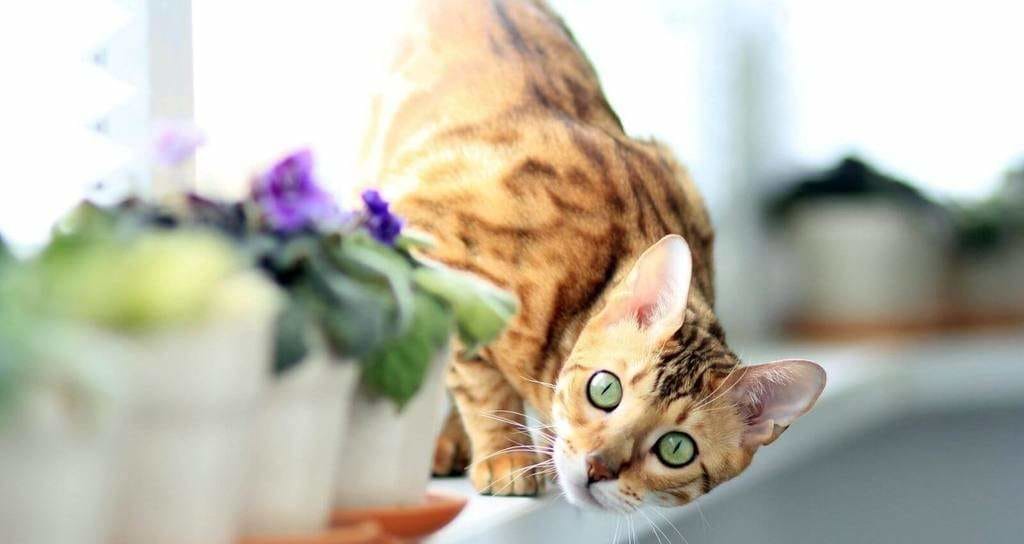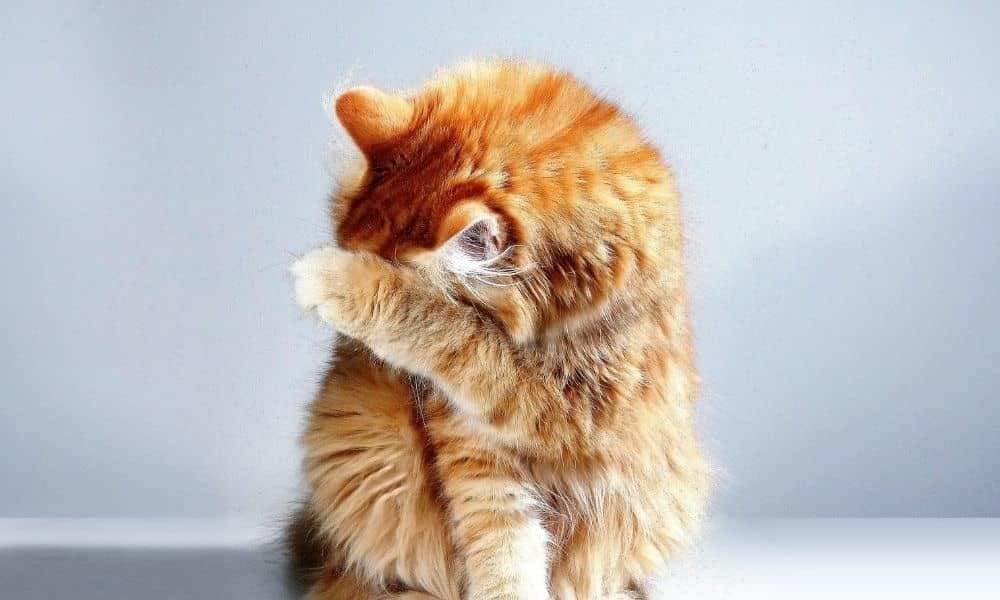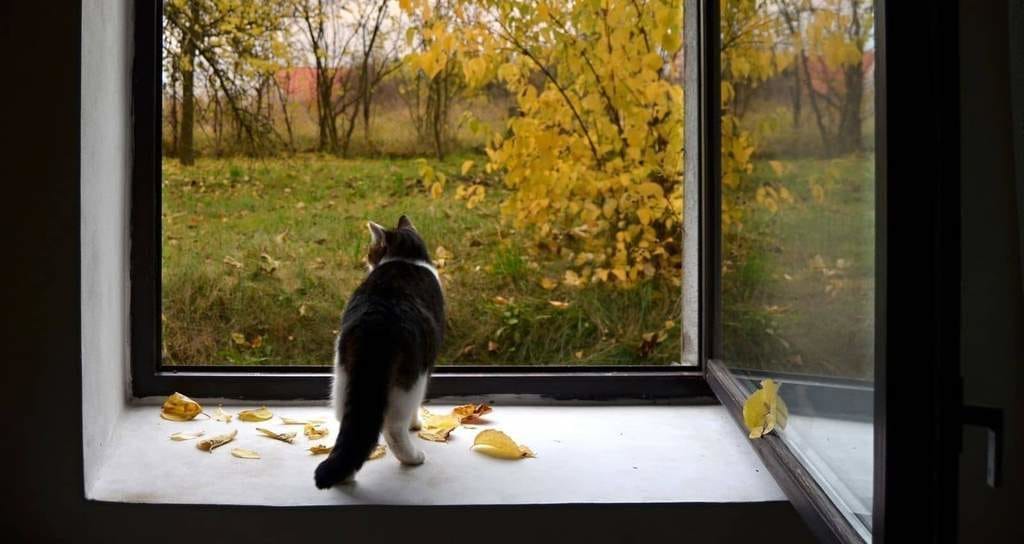Ideally, all cats should be able to go outside as in their natural habitat. However, cats can adapt to living indoors, especially if they are accustomed to it from a young age.
Some cats need to be confined indoors for medical reasons, while others prefer indoor living. If they are bored, they may develop behavior problems. So there are a number of ways to make your house cat happy . We give you all the advice to make your cat feel comfortable indoors.
Keep him busy...

Domestic cats that have free access to the outdoors often engage in hunting activities, even if they do not have access to prey, such as playing with fallen leaves or blown grass. wind.
It's important to give cats opportunities to engage in hunting behavior because it mentally stimulates them and releases feel-good hormones called endorphins. Indoor cats cannot play outside, so it is important to provide them with toys and activities to keep them busy.
If you are away from home all day , you may consider getting two cats. They could keep each other company and keep each other from getting bored. However, while this setup may work well if the two cats were raised together, it is not a guarantee. Even some siblings may prefer not to stay together once they reach adulthood.
If you are introducing a new cat into your household , it is essential to do so slowly and carefully to avoid any ongoing tension that could lead to behavior problems and conflicts. If the two cats don't get along , it can be even more stressful for them if they are confined indoors and can never escape from each other.
Advantages and disadvantages of keeping your cat indoors

Benefits of keeping your cat indoors
- Your cat will be protected from external dangers , such as road accidents, physical attacks from other animals and external poisons
- Your cat will be less likely to contract parasites or infectious diseases by not having direct contact with other cats or the environment shared with other cats or other animals
- Your cat will not hunt if kept indoors only , assuming your home is rodent-proof. You still need to give him the opportunity to play and express his hunting behavior.

Indoor risks
- If he does not have access to the outdoors, your cat may suffer from frustration if he is not able to express his natural behavior. This can lead to a variety of behavioral problems, depending on a number of factors, including the environment of the home, the relationship with other cats in the home, and the cat's character.
Examples of behavioral problems include scratching furniture, splashing, excessive grooming, aggression, dirtying the house, and depression.

- While cats like their environment to be predictable, a static environment can be detrimental . Some indoor cats may develop a fear of change, becoming sensitive to any differences within their small territory. These cats become more dependent on routine than most cats.
- Your cat will be unable to hunt if kept only indoors and will lose this mental stimulation. It may be more difficult for a cat to adapt to life indoors if it was once a prolific hunter or loved the great outdoors.

- Without access to the outdoors, your cat may not be able to escape disturbances such as construction work, visitors or other pets in the household. While cats in multi-cat households with access to the outdoors may benefit from personal space, indoor cats may be stressed living together in a restricted territory.
- Cats confined indoors are not necessarily safe from the risk of stress caused by other cats in the neighborhood. A cat that can see another feline through the window can still be stressed by the presence of this cat in its territory and develop behavioral problems.

- Other dangers to be aware of:
- indoor hazards - It is important to remember to keep cabinets, washing machines and dryers closed. Toilet lids should be kept down to avoid the risk of drowning. Balconies and windows should be enclosed with sturdy mesh or mosquito nets, ensuring that there are no holes through which your cat could fall.
- Houseplants - some plants and flowers, especially lilies, can be toxic to cats. It's probably best to make sure you don't have any plants dangerous to cats in your home, or at least not within their reach.

- household products - cats are very sensitive to poisoning. A number of common household products can pose a danger to cats and should be kept away from them.
- inactivity and obesity - indoor cats need opportunities to exercise to prevent them from becoming fat or inactive, which can lead to other health problems.

- overdependence - a solitary indoor cat relies on its owner to provide stimulation, companionship and exercise and may become overly dependent.
- escape - it can be difficult to keep windows and doors closed to prevent an indoor cat from escaping into occupied homes. If the cat escapes, it will be very stressed and disoriented because it has no experience of the outside environment.
Improve and optimize the indoor environment

Cats should be provided with a stimulating and safe indoor environment, whether they go outside or not. If your cat is exclusively kept indoors , this is especially essential. If you have more than one cat, provide enough resources in different places where your cats can eat, drink, relieve themselves, rest and hide.
Nutrition
Cats like to eat and drink away from their litter box because it's naturally more hygienic. However, many people don't realize that cats also like to have their food and water bowls in separate locations. This dates back to the cat's evolution into the domestic cat, which ate in a different location to avoid contaminating its water source with the remains of its prey.

Avoid placing food and water bowls next to each other . Eating and drinking can be vulnerable activities for a cat. So try to place the bowls slightly away from the wall, so that the cat can sit with its back to the wall and see its surroundings. Cats are all individuals and therefore have different preferences.
In the wild, cats spend much of their time on short, frequent hunting expeditions. In comparison, domestic cats are given bowls of food, so it doesn't take long for them to eat their daily ration or engage their greater senses.
Try using anti-gluttonous bowls to give part, or all, of your cat's daily ration. It's best to let cats get used to it gradually, to ensure they have enough to eat and don't get frustrated.

Play and exercise
Entertain your cat with toys, climbing towers or activity centers. You can buy them or make them - a cardboard box with holes in it or a ball of aluminum foil works just fine. The game is more fun if you participate too - you can use fishing rod toys with feathers on a string to imitate their prey!
Opportunities to exhibit hunting behavior are often triggered by toys that move and attract the cat's attention. Senior cats will enjoy playing three or four times a day, but the type of play may need to be tailored to their needs and degree of mobility.

Younger cats will be happy to play 10 times a day or more . Very short games, one to two minutes, are ideal. Cats use their energy in short bursts when hunting, so try to imitate this phenomenon.
Create interest at mealtimes by hiding biscuits around the house for your cat to find. Make a pyramid out of cardboard toilet paper tubes and hide food in it, or use a puzzle ball. Change toys regularly to keep them interesting.
A place to hide
It is important to always provide your cat with an easily accessible place to hide, so that they feel safe. A hiding place can be something as simple as a cardboard box on its side, or upside down, with large holes for access. You can also purchase an igloo-style cat bed , or provide space under the bed or in a cabinet with the door left ajar. The cat should not be disturbed while hiding.

A place to gain height
Cats feel safer if they can see their surroundings from a certain height , which also increases their territory by giving them additional vertical space they can use.
This is a common coping mechanism for cats who feel anxious or fearful. You can place a cozy blanket on top of a cabinet and provide access to it by placing a stool or similar object next to it. Cats also like to sit on window sills and shelves. Particular attention should be given to older cats.

Sleep
On average, cats spend around 16 hours a day sleeping. Cats usually rest or sleep intermittently throughout the day and prefer a warm, comfortable and safe place. There is a wide range of cat beds, including igloo beds, or radiator hammocks . A simple cardboard box with a cover inside will also work.

Scratching and climbing
A scratching post allows your cat to exercise , maintain its claws and express its natural behavior, while protecting your furniture. Cats like to stretch and scratch when they wake up, so try placing the scratching post near where they sleep. A good scratching post has the following characteristics:
- a solid and sturdy base so that the cat can lean against the post without it wobbling
- sufficient height for the cat to stretch out completely
Eat grass

One type of grass that cats particularly enjoy is catnip . Its leaves are long and wide and it is easy for them to bite them. Eating grass is thought to help cats cough up hairballs. If your cat can't go outside, catnip can be grown indoors.
Seeds are readily available at garden centers and pet stores. If you don't have grass, your cat may try to eat other household plants, which can be a risk.
Toilet
It's good to have one litter box per cat and an extra box , especially if your cats are kept indoors. Place litter boxes in different, quiet areas of the house, away from food and water bowls. Cats don't like to use dirty or soiled boxes, so make sure the litter box is cleaned at least once a day.
This helps avoid accidents and is more hygienic. Cats generally prefer a litter depth of at least 3 cm and sandy texture litter. Gradually slowly change the box, litter box or its location to avoid accidents.

Access inside or outside?
Overall, the decision to keep the cat indoors or give it access to the outdoors should be evaluated based on the cat's personality, health, previous experience, home and environment. local outdoor environment and owner preferences.
Cats kept indoors only should be given the opportunity to express their natural behavior to ensure their well-being, reduce dependence on their owner, and avoid unwanted behavioral problems.